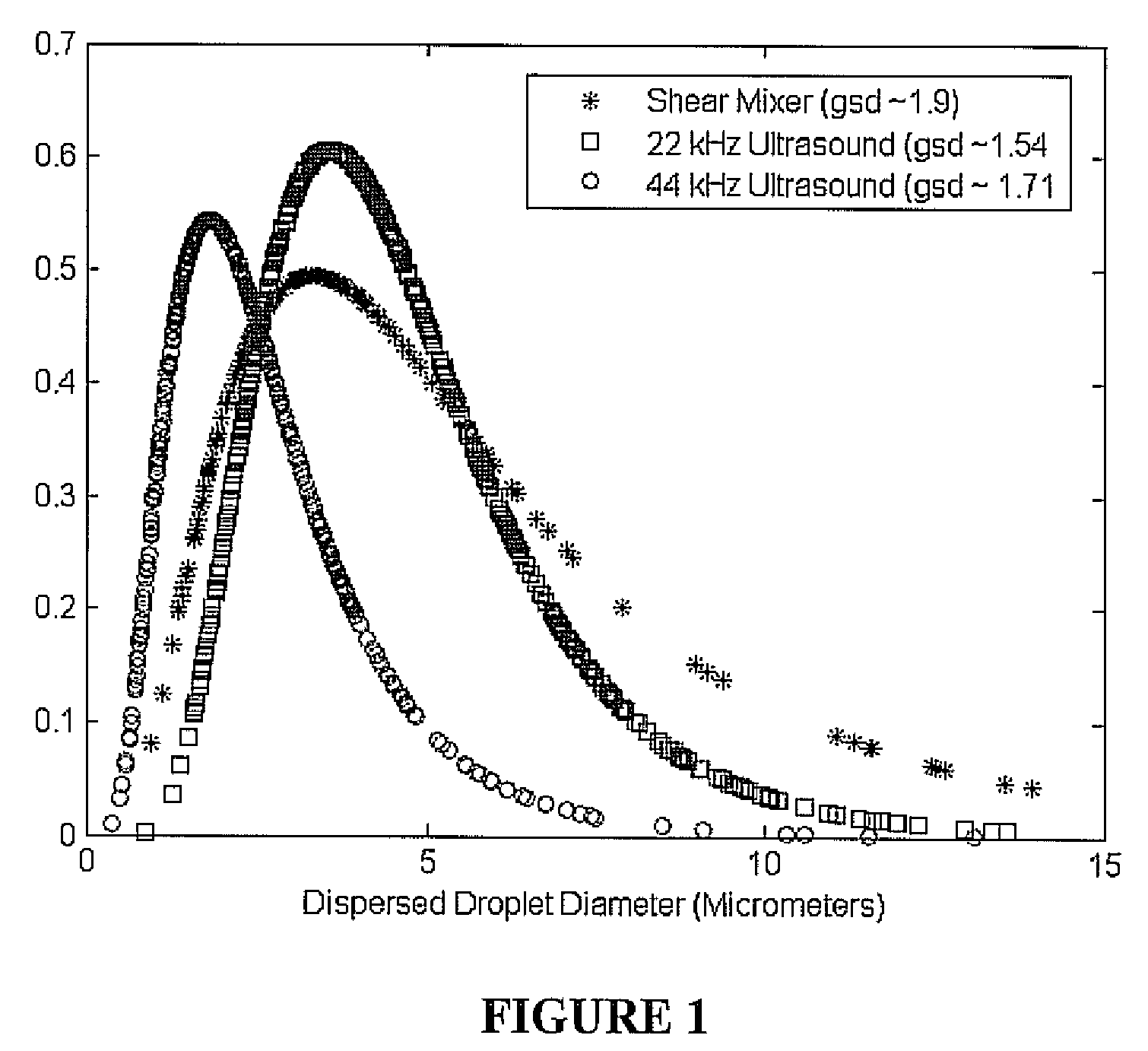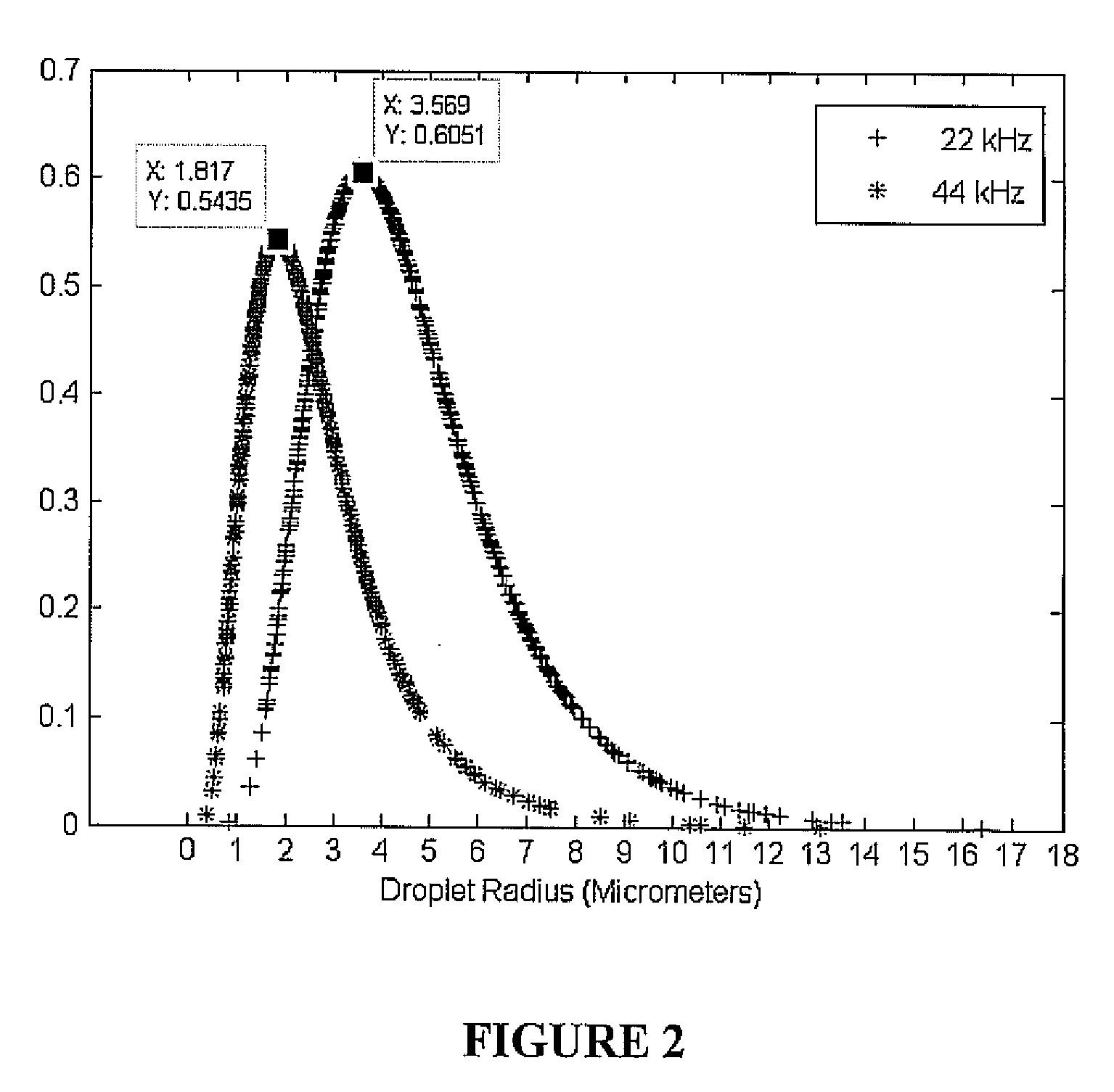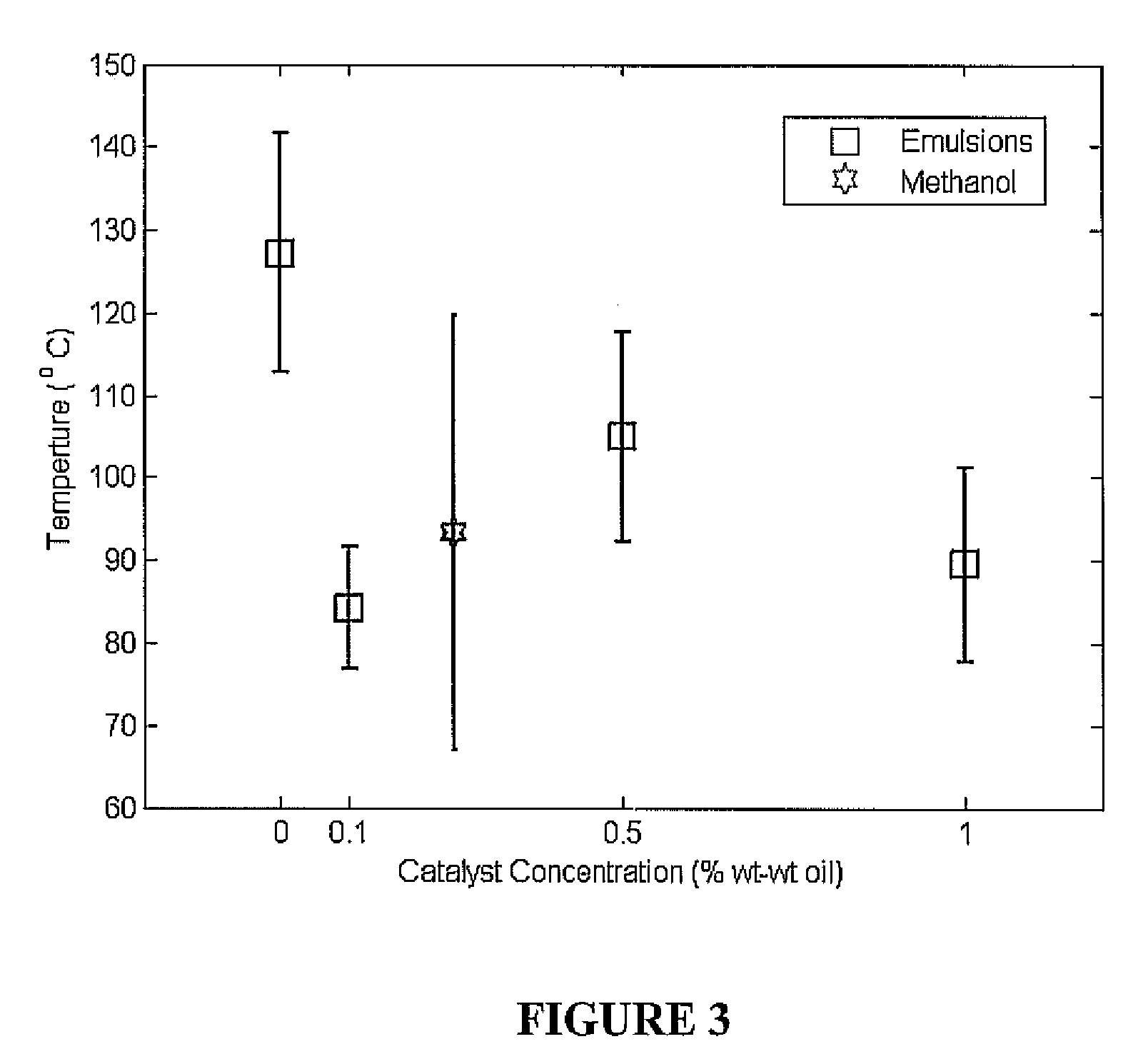Ultrasonic and microwave methods for enhancing the rate of a chemical reaction and apparatus for such methods
a technology of ultrasonic and microwave technology, applied in the field of chemical reactions and processes, can solve the problems of high energy consumption of foregoing types of reactions, complicated apparatus and process, and inability to achieve high-pressure conditions, so as to enhance the rate of chemical reactions and the effect of enhancing the reaction ra
- Summary
- Abstract
- Description
- Claims
- Application Information
AI Technical Summary
Benefits of technology
Problems solved by technology
Method used
Image
Examples
example 1
Emulsion Particle Size
[0088]To determine the particle size of dispersed alcohol droplets for emulsification technique, emulsions consist of pure soybean oil and methanol specifically in absence of catalyst, emulsion stabilizers, or reaction products, byproducts, or intermediates at atmospheric pressure and room temperature (25 Celsius). Once the emulsification treatment is completed, a single sample of the emulsion of up to 1 mL is extracted and placed on an optical slide and into an optical microscope. The optical microscopy system must be capable of 0.5 micrometer resolution corresponding to a nominal magnification of 500 times. When selecting the area for the image used for subsequent measurement, care is taken to isolate large populations of the dispersed phase, avoid contaminants, bubbles, and aggregate, and avoid the focal planes corresponding to the interface between the emulsion and the slide, slide cover, or outside environment. The resulting image used for particle measure...
example 2
Emulsion Particle Size
[0096]In order to specify and control the size distributions emulsions prepared for subsequent microwave heating treatment, the control of ultrasonic frequency is used. The desired emulsion can result from a single frequency treatment, or a combination of frequencies either in series or simultaneously either comprising the entire emulsification system or as a component within a system comprising of other techniques. The control of ultrasonic frequency and treatment order is used for the preparation of emulsions for microwave heating. FIG. 2 shows the use of higher frequency ultrasonics used to create a finer dispersed (emulsified) phase than that of a lower frequency treatment.
example 3
Enhancing Microwave Superheated Temperature
[0097]The objective of enhancing microwave superheated temperature was pursued using emulsions with molar ratios of methanol to soybean of 3:1, 6:1, and 9:1 and 0%, 0.1%, 0.5%, and 1.0% sodium hydroxide catalyst by weight of oil. Each sample was subjected to the four microwave powers until boiling twice. The boiling point associated with each catalyst concentration is averaged and the standard deviation calculated. The results are compared to the averaged values for pure methanol to indicate which samples extend the superheated boiling point of methanol in FIG. 3. The result of the comparison indicates that catalyst free ultrasonically formed emulsions were most capable of extending the superheated boiling point of methanol. The addition of catalyst created nucleated boiling and thermal instability while heating, resulting in lower average boiling temperatures than without catalyst.
PUM
| Property | Measurement | Unit |
|---|---|---|
| Temperature | aaaaa | aaaaa |
| Temperature | aaaaa | aaaaa |
| Temperature | aaaaa | aaaaa |
Abstract
Description
Claims
Application Information
 Login to View More
Login to View More - R&D
- Intellectual Property
- Life Sciences
- Materials
- Tech Scout
- Unparalleled Data Quality
- Higher Quality Content
- 60% Fewer Hallucinations
Browse by: Latest US Patents, China's latest patents, Technical Efficacy Thesaurus, Application Domain, Technology Topic, Popular Technical Reports.
© 2025 PatSnap. All rights reserved.Legal|Privacy policy|Modern Slavery Act Transparency Statement|Sitemap|About US| Contact US: help@patsnap.com



